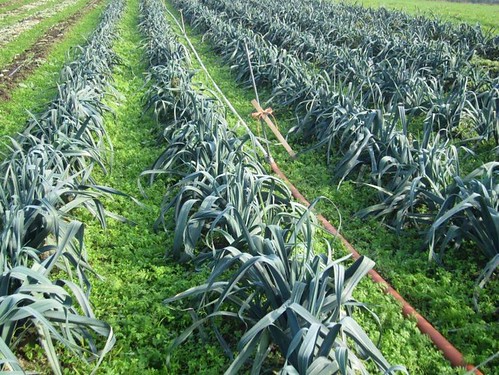
The National Organic Program (NOP) – part of the USDA’s Agricultural Marketing Service (AMS) – protects the integrity of certified organic products by developing clear standards, overseeing the certification of organic farms and businesses, and ensuring compliance with the USDA organic regulations.
Organic is a labeling term that means the food or other agricultural product has been produced through approved methods that integrate cultural, biological, and mechanical practices. These practices foster cycling of resources, promote ecological balance, and conserve biodiversity. Certified organic crop and livestock producers manage their farms according to the USDA organic regulations. This means using materials that are approved for use in organic production, and maintaining or improving the natural resources of their operation, including soil and water quality.
What does this really mean?
Organic systems seek to mirror nature by maintaining biodiversity on the farm and using methods that support conservation of natural resources. For instance, organic producers often plant native vegetation throughout a certified organic farm. The vegetation provides food, cover, and corridors for beneficial organisms such as pollinators like bees and bats, slows wind and water down for erosion control, provides groundwater recharge, and filters pollution.
Organic farmers and producers may also use practices that attract or introduce beneficial insects by planting and maintaining diverse plant species. They can protect habitats for birds and mammals, and protect water ways by controlling livestock access to sensitive areas along rivers, creeks, streams, and wetland areas. Organic farmers and producers can also provide conditions that boost diversity in soil organisms by adding organic matter or growing deep rooting cover crops as a part of the crop rotation. Additionally, organic farmers and producers can manage the frequency, intensity, and timing of grazing and forage harvests to protect soil and water quality.
As well as benefitting the environment and improving soil health, organic operations are often able to decrease their dependence on fertility inputs purchased from off the farm, reduce pest management costs, maintain reliable sources of clean water, increase drought resiliency and achieve better pollination by using these types of production practices.
For more examples of production practices that organic producers can and do use to support conservation and biodiversity and meet the organic standards, you can visit the NOP website to download the Guidance on Natural Resources and Biodiversity Conservation. The USDA Natural Resources Conservation Service also provides numerous resources on conservation in organic systems, including technical and financial assistance and their recently published Organic Farming Handbook.


